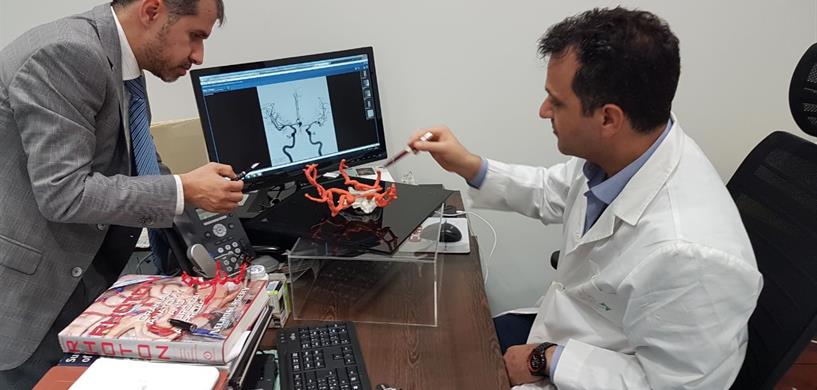Doctors have succeeded in saving the life of a sixty-year-old Omani woman who suffered from a cerebral aneurysm, with the help of a state-of-the-art custom 3D-printed model.

The model of the patient’s brain dilated arteries helped doctors at Rashid Hospital in Dubai plan the complex surgery. The patient was admitted after suffering from severe bleeding in the brain, and Dr Abdullah Qasim, consultant and head of neurosurgery at Rashid Hospital said that an X-ray found that the patient suffered from cerebral aneurysm in not one but four veins.
“Due to the complexity and rarity of the patient’s case, we needed a 3D model that allowed us to understand exactly how we could reach the arteries in a safe way,” said Dr Qasim.
After studying the model, Dr Ayman Al Sibaei, interventional radiologist at Rashid Hospital, conducted a six-hour endovascular surgery where he placed coils to stop the dilation, which was causing the bleeding. The surgery was successful and the patient was transferred to the ICU where she is recovering.
“Without the 3D model the surgery would have taken longer and the risk would have been higher because it would have meant conducting the surgery with limited understanding of the abnormality,” said Dr Qasim. “The patient is recovering well, we conducted an MRI and CT scan, which found that blood was flowing normally.”
Dr Mohammad Al Redha, director of the Department of Organisational Transformation at the DHA, said the Authority is planning to further utilise 3D-printing in medical care in line with the Dubai 3D Printing Strategy – a unique global initiative that aims to exploit technology for the service of humanity and promote the status of the UAE and Dubai as a leading hub of 3D-printing technology by 2030.
The model was created by 3DVinci Creations, who said they were happy that the outcome of the operation, adding that they would like to be at the forefront of this revolutionising technology along with DHA.
“3D printing means it will be easier to study the extent of patient diagnosis and plan the intricate steps of the surgery by using a patient specific anatomical model, thus reducing the risks and costs involved in the entire procedure and improving the outcome,” said Suneel Kashyap, sales manager at 3DVinci Creations.





